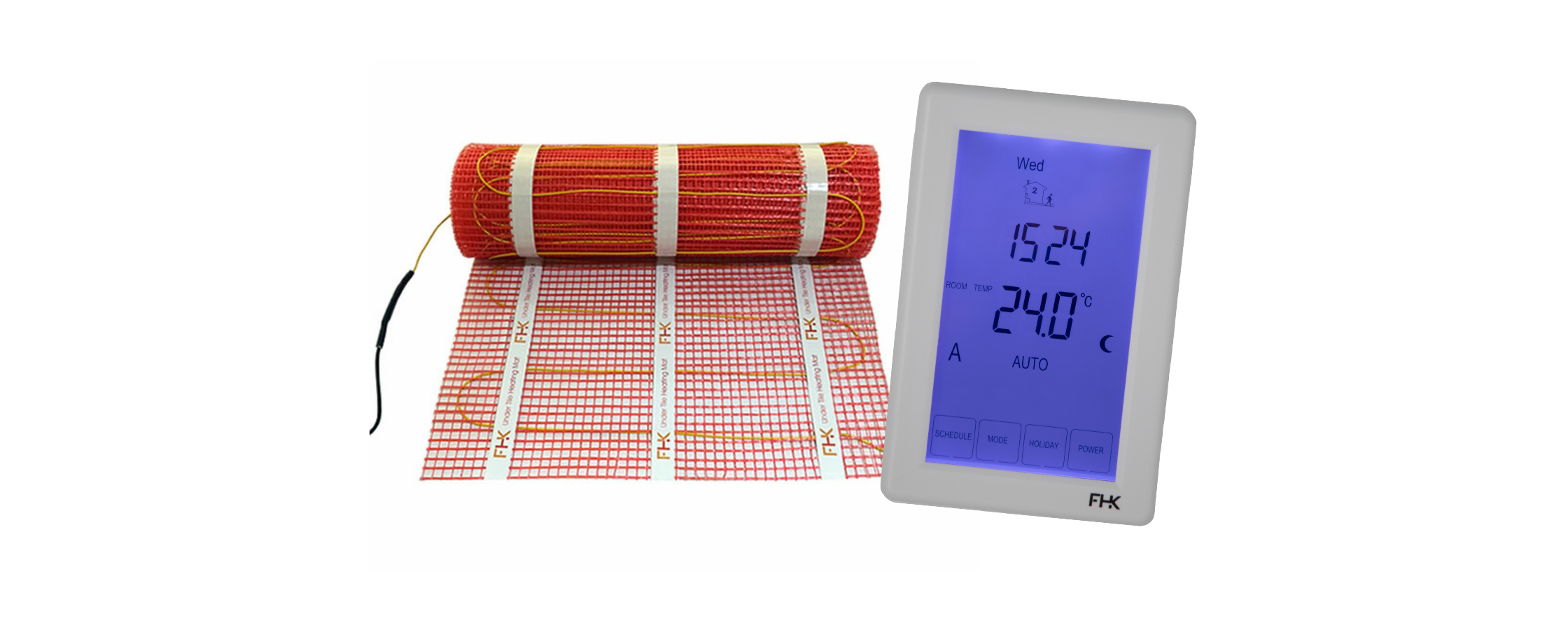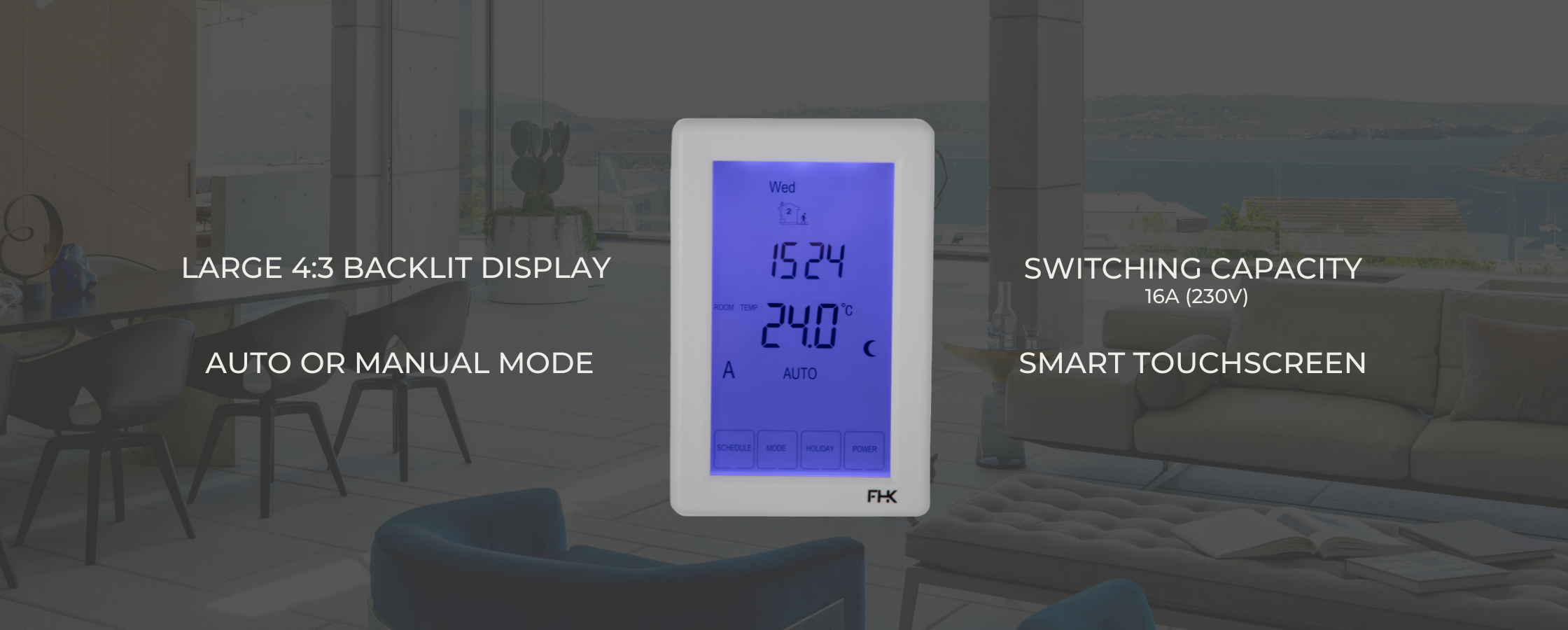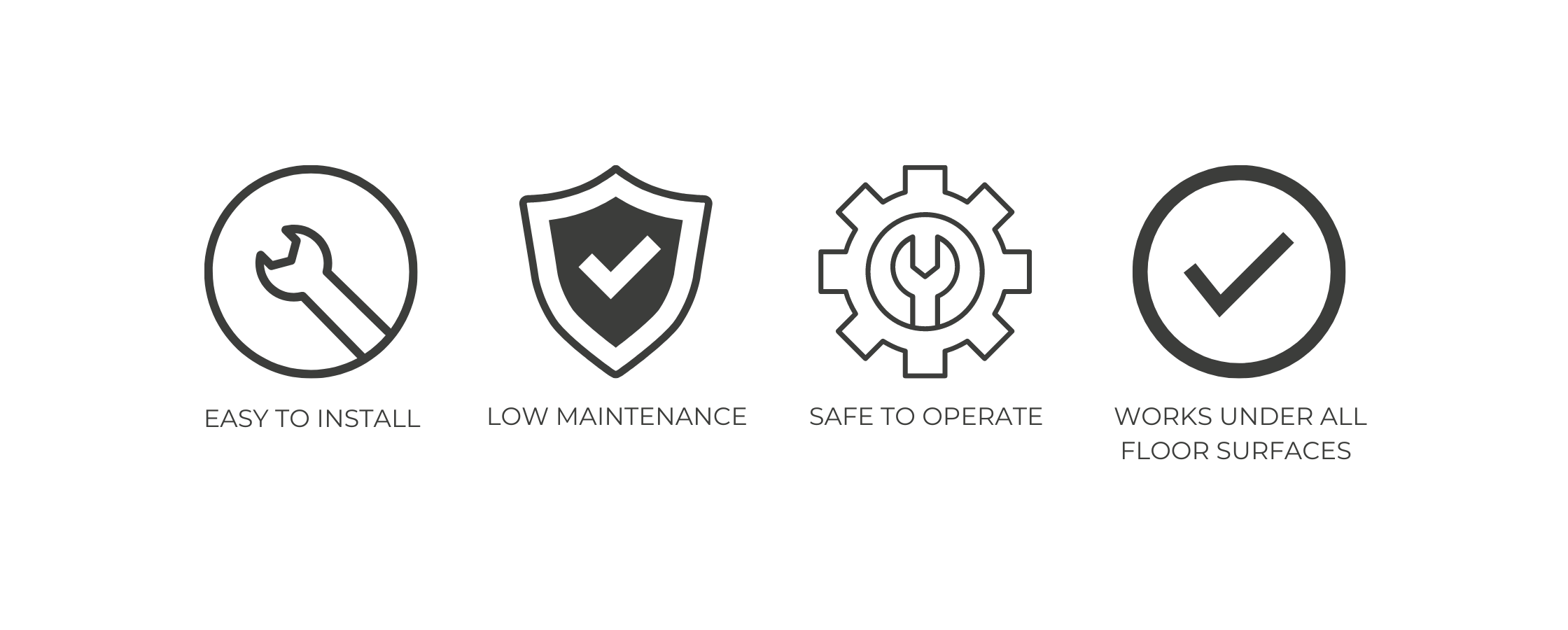Floor heating seems like a luxury to have in the cooler months when stepping onto the freezing bathroom floor but is it worth it?
In this article, we will explore all the different types of underfloor heating systems and breakdown installation and running costs.
The benefits of underfloor heating are well-established. The technology is time-tested and energy-efficient. This is a great choice for homeowners who want a high level of control over their home's temperature. Floor heating allows for a more comfortable living environment as it heats up much quicker than conventional heating methods.
Underfloor heating is not just a great cold buster for the cooler months it sits under the floor surface making it safe and allergen friendly.
There are two main types of underfloor heating methods: electric floor heating and hydronic floor heating. Let's break down each system.
Electric Floor Heating
Electric heating is a process in which electrical energy is converted to heat energy. Electric floor heating systems conduct heat through flexible heating elements like cables or preformed electric cable mat heaters. These conductors are designed with a low profile to sit in screed, in-slab or straight under the flooring.
Electric floor heating systems can be installed easily in new builds or retrofitted into renovations.
Hydronic Underfloor Heating
Hydronic floor heating is a water-based system also known as a wet system and requires skilled professionals for installation. Pipes generally made from polyethene are embedded in slabs and hot water is transferred through the pipes heating the concrete floors and designer hydronic radiator panels to rooms with timber flooring.
Hydronic systems can use a single source or combination of energy sources to help manage energy costs.
Hydronic Heat Pump systems offer an excellent water heating source for running hydronic floor heating, wall panel radiators, trench heaters and fan coil unit heating systems. Water is heated with high energy efficiency and then circulates through the heating system for floor and space heating.
And because they don't rely on direct sunlight typical with solar systems, they can operate in all seasons and conditions experienced throughout the year. Long after a conventional solar collector array would have given up and reverted to a gas boost which is typical with most solar hydronic heating applications, Hydronic Heat Pumps continue to absorb solar energy from the cold air throughout the night.
Hydronic Heat Pumps operating at ambient air temperatures 20°C have a COP of 4. The higher the COP, the lower the running costs. On average, Hydronic Heat Pump underfloor heating systems will cost 1/4 to operate compared to an equivalent electric in-slab heating system.
Why Underfloor heating?
Underfloor heating systems are becoming increasingly popular and for the following reasons:
- Energy Efficient: As we focus more on sustainability our need to eliminate heating by combustion is imperative. This is why Underfloor heating becomes a superior solution as it uses less energy but provides ultimate thermal comfort quality. Floor heating systems consume less energy because they only need to be run at a much lower temperature and they heat a room faster than traditional heating systems to heat a room.
- Low Maintenance: Once the underfloor heating is installed the system requires almost no maintenance. And for total peace of mind, most systems come with an extensive warranty, for example, our electric mat heaters come with a 20-year warranty.
- Freedom: As underfloor heating mats are installed under the floor surface this allows for complete design freedom.
- Indoor air quality: underfloor heating has a positive effect on the quality of air indoors for a couple of reasons. Firstly it keeps the air fresh and oxygen-rich. Underfloor heating does not circulate air and hence doesn't circulate dust making it allergen friendly. Another major benefit is that underfloor heating establishes a comfortable temperature environment that does not support dust mites, mould, bacteria and viruses.
- Safe: once installed and covered by the floor it is invisible making it safe as there are no sharp edges and no hot elements to touch. The Thin Cable Mat heating element is double insulated, with a full earth screen to reduce EMR. The primary insulation of the inner heating conductor is Teflon, which is resilient to heat and does not deteriorate over time. The electric underfloor heating system connected to an RCD circuit is guaranteed safe - even in wet areas. Underfloor heating is a great family-friendly choice.
- Control: underfloor heating systems are designed to be controlled but smart thermostats. You can manually turn floor heating on or off or set it to auto mode where you set a schedule of when you want your floor heating systems to start and stop.
Two common questions answered when it comes to underfloor heating:
Does underfloor heating add height to my floors?
When it comes to electric floor heating mats, the thin Cable Mat adds no more than 2-3mm to the floor height (in tile-adhesive), making it the perfect system where floor levels cannot be raised.
The thin electric underfloor heating system can be installed on top of existing hard floor surfaces, F/C sheet boards, waterproofing or concrete slabs. The flexibility makes the cable mat suitable for use throughout the home, in new build or renovation projects.
What happens if my underfloor heating breaks?
It is very rare but not impossible for the underfloor heating system to stop working. Generally, most errors happen during the installation process, for example, the floor heating system has been cut during tiling or screeding. This can be fixed or replaced before tiling continues.
That is why tests are conducted before the floor heating system is covered by screed or the flooring. Tests should be conducted on the underfloor heating before, during and after installation. Using a multimeter the installer is checking the cable resistance, and if there is a discrepancy of more or less than 10% difference between each test this is a sign something is wrong.
If an electric floor heating system stops working once installed and covered an underfloor heating specialist will be able to isolate where the issue is with specialised equipment and thermal camera. Once isolated the cable can be easily repaired without having to remove the whole floor surface.
If tested and installed properly underfloor heating is a reliable and a low maintenance heating system.
Installation Costs
A hydronic underfloor heating system is custom-designed to suit your house design. Hydronic systems are more expensive to install than electric heating systems but the running costs are less compared to an electric underfloor heating system.
Electric systems use fewer components and are easier to install than hydronic systems. With the latest mat heater designs, you can install an electric mat floor heater yourself, but you will need a certified electrician to install the conduit and connect the floor heating system. An electric in-screed floor heating system controlled by a smart touch screen thermostat in an average-sized Australian bathroom (8m2) can cost under $700.
Running Costs
Running costs for underfloor heating can vary depending on your home. Some of the factors that play into the running cost of an underfloor heating system include the level of insulation, type of flooring, the size of the area and the desired running temperature, your specific energy rate and how you control and monitor your floor heating system.
If you run your underfloor heating in your average-sized bathroom for 4 hours each day it will cost you less than a cup of takeaway coffee in a week.
Insulation can help reduce the cost of underfloor heating and contribute to a significant reduction. Insulation keeps the warmth the electric floor heating produces, saving money and energy usage. The other benefit of insulation is that it evenly distributes into the room quicker. In short, proper insulation can increase heat-up time and decrease heat loss and in turn reduces the overall running cost by as much as 50%.
What flooring is suitable for underfloor heating?
Underfloor heating can work under most floor surfaces. Each flooring produces different results depending on its thermal conductivity. Stone tiles and ceramic are a great choice as they are excellent thermal conductors retaining heat for a long time.
Flooring suitable for underfloor heating includes tiles, wooden flooring, concrete, laminate, vinyl, marble, engineered flooring and carpet.
How to measure for electric floor heating
For a detailed guide on how to measure for underfloor heating click here.
How do you control underfloor heating?
Typically underfloor heating is installed by sections for example living rooms and each zone is controlled by a thermostat. There are a variety of thermostats for both electric and water-based underfloor heating systems.
Our smart touch screen thermostat is an intuitive programmable timer thermostat used for controlling electric floor heating systems. The thermostat is designed for fixed vertical installation. It is an Intuitive menu-driven set-up, programming and operation with audio prompts to confirm touchscreen entries. It has a backup battery for user and program setting retention after power loss.
You can schedule a program for your floor heating system to be run on auto mode or manual mode operation.
Underfloor heating is a cleaner, smarter way to heat your home, providing comfortable heat from the ground up.
Our electric floor heating systems are easy to install and give you complete design freedom.
Our team would love to answer any other questions you have, simply contact us on (02) 9114 6934


